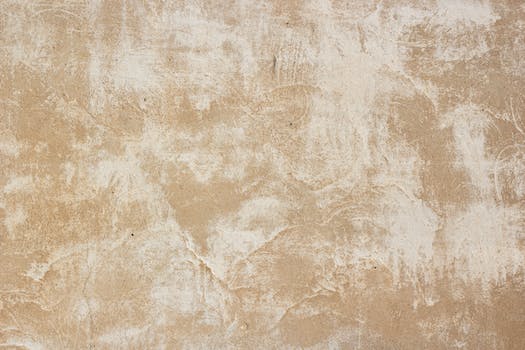Painting your walls is a great way to give your home a stylish and personalized touch. With the right techniques and a bit of creativity, you can transform any room into a beautiful and inviting space. In this article, we’ll share some tips and tricks for creating stylish walls with paint, so you can bring your vision to life and make your home truly your own.
- 1. Creating Stylish Walls with Paint
- 1.1. Choosing the Right Type of Paint
- 1.2. Selecting the Right Color Palette
- 1.3. Preparing the Walls for Painting
- 1.4. Using Different Painting Techniques
- 1.5. Adding Accent Walls
- 2. Choosing the Right Type of Paint
- 2.1. Understanding the Different Types of Paint
- 2.2. Choosing the Best Paint for Your Walls
- 2.3. Considering the Finish of the Paint
- 2.4. Evaluating the Quality of the Paint
- 2.5. Determining the Amount of Paint Needed
- 3. Selecting the Right Color Palette
- 3.1. Understanding the Psychology of Color
- 3.2. Using Color to Create a Mood
- 3.3. Coordinating Colors with Furniture and Decor
- 3.4. Playing with Patterns and Textures
- 3.5. Using Accent Colors to Add Pop
- 4. Preparing the Walls for Painting
- 4.1. Cleaning and Sanding the Walls
- 4.2. Filling in Cracks and Holes
- 4.3. Applying a Primer Coat
- 4.4. Protecting the Floors and Furniture
- 4.5. Taping Off Edges and Corners
- 5. Using Different Painting Techniques
- 5.1. Creating Stripes and Patterns
- 5.2. Using Stencils and Decals
- 5.3. Sponging and Ragging Techniques
- 5.4. Creating Faux Finishes
- 5.5. Using Metallic and Textured Paints
- 6. Adding Accent Walls
1. Creating Stylish Walls with Paint
Painting your walls is a great way to update the look of your home. With a little creativity, you can turn a plain wall into a stylish focal point. Here are some tips and tricks for creating stylish walls with paint:
1. Use a bold color: A bold color can add drama and depth to a room. Consider using a deep blue or rich red on an accent wall.
2. Create a pattern: You can create a pattern on your walls with paint. Use painter’s tape to create stripes, chevron, or other designs.
3. Try an ombre effect: Ombre is a popular trend in fashion and home decor. You can create an ombre effect on your walls by blending two or more colors together.
4. Use metallic paint: Metallic paint can add a touch of glamour to your walls. Use it sparingly on an accent wall or in a pattern.
5. Experiment with texture: You can add texture to your walls with paint. Use a special roller or brush to create a textured effect.
1.1. Choosing the Right Type of Paint
Choosing the right type of paint is crucial when it comes to creating stylish walls. There are several types of paint available in the market, such as latex, oil-based, and acrylic. Each type has its own set of advantages and disadvantages, so it is important to choose the right one based on your needs.
Latex paint is water-based and is perfect for walls that require frequent cleaning. It dries quickly and is easy to apply. Oil-based paint, on the other hand, is more durable and is ideal for walls that are prone to wear and tear. However, it requires more time to dry and produces strong fumes.
Acrylic paint is a combination of both latex and oil-based paints. It is versatile and can be used on a variety of surfaces. It is also easy to clean and dries quickly. However, it may not be as durable as oil-based paint.
When choosing the right type of paint, consider the room you are painting, the level of durability required, and the finish you want to achieve. With the right type of paint, you can create stylish walls that will last for years to come.
1.2. Selecting the Right Color Palette
When it comes to creating stylish walls with paint, selecting the right color palette is crucial. The colors you choose will set the tone for the entire room, so it’s important to consider a few key factors when making your selection.
First, think about the overall mood you want to create. Do you want the room to feel calm and relaxing, or energizing and invigorating? Different colors can evoke different emotions, so choose accordingly.
Next, consider the other elements in the room, such as furniture, flooring, and accessories. You want your paint colors to complement these elements, not clash with them. Look for colors that work well with the existing color scheme.
Finally, don’t be afraid to get creative. Painting an accent wall or using a bold color can add visual interest and personality to a room. Just make sure it fits with the overall style and mood you’re trying to create.
1.3. Preparing the Walls for Painting
Before painting your walls, it’s important to properly prepare them. This includes cleaning any dirt or grime off the walls, filling in any cracks or holes, and sanding down any rough or uneven areas. It’s also important to use a high-quality primer to ensure that the paint adheres properly and lasts longer. Taking the time to properly prepare your walls will result in a more professional-looking and long-lasting paint job.
1.4. Using Different Painting Techniques
There are many different painting techniques that can be used to create stylish walls with paint. One popular technique is called color washing, which involves applying a thin layer of paint and then wiping it away with a rag or sponge to create a subtle, textured effect. Another technique is sponging, which involves dabbing a sponge into paint and then gently pressing it onto the wall to create a mottled effect. Stenciling is also a popular technique, which involves using a stencil to apply a pattern or design onto the wall. Other techniques include rag rolling, stippling, and dragging. The key to using these techniques successfully is to practice first on a small area and to choose colors that complement each other and the overall decor of the room.
1.5. Adding Accent Walls
Adding an accent wall is a great way to add interest and style to a room without going overboard. Choose a color that complements the rest of the room, but is different enough to make a statement. You can also add texture or design to the accent wall using techniques like stenciling or wallpapering. Just remember to balance the accent wall with the rest of the room, so it doesn’t overwhelm the space.
2. Choosing the Right Type of Paint
Choosing the right type of paint is crucial in creating stylish walls. There are many types of paint available in the market and each type has its own unique characteristics. Some types of paint are better suited for certain surfaces while others are more versatile. It is important to consider the surface you will be painting on, the type of finish you want, and the durability of the paint. Here are some tips to help you choose the right type of paint for your project:
2.1. Understanding the Different Types of Paint
When it comes to painting your walls, choosing the right type of paint is crucial to achieving the desired look and longevity of the paint job. There are several types of paint to consider, including latex, oil-based, acrylic, and enamel. Each type of paint has its own unique properties and benefits, so it’s important to understand the differences between them before making a decision. In this section, we will explore the different types of paint available and their characteristics to help you choose the right one for your project.
2.2. Choosing the Best Paint for Your Walls
Choosing the best paint for your walls is an important decision. The type of paint you choose will affect the overall look and feel of your room, as well as how durable the paint is over time. There are a few things to consider when choosing the right type of paint for your walls, including the finish, color, and quality of the paint. With the right paint, you can create a stylish and welcoming space that you’ll love spending time in.
2.3. Considering the Finish of the Paint
When it comes to painting a room, the finish of the paint is just as important as the color. The finish of the paint will affect the overall look and feel of the room. There are a few different finishes to choose from, including matte, eggshell, satin, semi-gloss, and high gloss. Matte finishes are great for hiding imperfections on walls, but they can be difficult to clean. Eggshell finishes have a slight sheen and are easier to clean than matte finishes. Satin finishes are even more durable and have a soft, velvety appearance. Semi-gloss and high gloss finishes are the most durable, but they also show imperfections more easily. When choosing the finish of your paint, consider the function of the room. For example, a high gloss finish may be great for a bathroom or kitchen where moisture is present and easy clean-up is necessary.
2.4. Evaluating the Quality of the Paint
Evaluating the quality of the paint is an important step in choosing the right type of paint for your project. Quality can vary greatly between brands and even within the same brand. Look for paints that have high levels of pigments and binders, as these are indicators of quality. Also consider the sheen of the paint, as higher sheen levels often indicate a higher quality paint. Don’t be swayed by low prices, as these can often be a sign of inferior quality.
2.5. Determining the Amount of Paint Needed
Determining the amount of paint needed is an important step in any painting project. To calculate the amount of paint needed, measure the length and height of the walls to be painted and multiply them together to get the square footage. Then, subtract the square footage of any windows or doors in the area. Finally, divide the remaining square footage by the coverage rate of the paint being used to determine the total amount of paint needed. It’s always a good idea to buy a little extra paint to account for touch-ups or mistakes.
3. Selecting the Right Color Palette
When it comes to painting your walls, selecting the right color palette is crucial. The colors you choose will set the tone for the entire room and can greatly affect the overall aesthetic. To begin, consider the mood you want to create in the space. Do you want it to be calming and serene or bold and energetic? Once you have a general idea, start by selecting a base color that will serve as the foundation for the room. From there, choose accent colors that complement the base color and add depth and interest to the space. Don’t be afraid to experiment with different shades and tones to find the perfect combination.
3.1. Understanding the Psychology of Color
When it comes to selecting the right color palette for your walls, it’s important to understand the psychology of color. Different colors can evoke different emotions and moods, and can even affect our behavior. For example, blue is often associated with calmness and relaxation, while red can evoke feelings of excitement and energy.
By understanding the emotional impact of colors, you can choose a color palette that suits the mood and style of your space. Consider the overall ambiance you want to create – do you want a serene and peaceful environment, or a bold and vibrant one? Once you have a clear idea of the mood you want to evoke, you can start selecting colors that align with that vision.
Keep in mind that color can also affect the perceived size and shape of a room. Lighter colors can make a space feel larger and more open, while darker colors can make it feel smaller and more intimate. If you have a smaller room, consider using lighter colors to create the illusion of more space.
Overall, selecting the right color palette for your walls is an important aspect of creating a stylish and inviting space. By considering the psychology of color and the mood you want to evoke, you can choose colors that will enhance the overall look and feel of your home.
3.2. Using Color to Create a Mood
Color is a powerful tool when it comes to setting the mood of a room. Whether you want to create a relaxing and calming atmosphere or a bold and energizing space, the colors you choose for your walls can have a significant impact. When selecting a color palette, it’s important to consider the mood you want to create and how different colors can affect that mood. For example, blues and greens are often associated with tranquility and peace, while yellows and oranges can create a sense of warmth and happiness. Neutral colors like beige and gray can provide a calming backdrop and allow other accents in the room to stand out. By carefully selecting the right colors for your walls, you can create a space that not only looks stylish but also feels just right.
3.3. Coordinating Colors with Furniture and Decor
When it comes to painting your walls, selecting the right color palette can make all the difference in achieving a stylish and cohesive look. One important factor to consider is coordinating the colors with your furniture and decor. By doing so, you can create a harmonious and balanced space that feels put together. Here are some tips for selecting the right color palette:
1. Start with a neutral base. Choose a neutral color such as white, beige, or gray for your walls as a base. This will allow you to add pops of color with your furniture and decor without overwhelming the space.
2. Consider the undertones. When selecting colors for your walls, consider the undertones of your furniture and decor. For example, if you have warm-toned wood furniture, choose a warm-toned wall color such as a creamy beige or soft peach.
3. Use a color wheel. A color wheel can be a helpful tool in selecting coordinating colors. Choose colors that are opposite each other on the color wheel (complementary colors) or colors that are next to each other (analogous colors) for a harmonious look.
Keep these tips in mind when selecting your color palette to create a stylish and cohesive space that reflects your personal style.
3.4. Playing with Patterns and Textures
Playing with patterns and textures is an excellent way to add depth and interest to your walls. By combining different textures and patterns, you can create a unique and stylish look that will set your home apart from the rest. When selecting your color palette, keep in mind the textures and patterns you plan to use. Choose colors that complement each other and work well together, rather than clashing or overwhelming each other. By pairing the right colors with the right patterns and textures, you can create a truly stunning look for your walls.
3.5. Using Accent Colors to Add Pop
Using accent colors is a great way to add pop and interest to your walls. Accent colors are bold and vibrant hues that are used sparingly in a room to create focal points and draw attention to specific areas. When selecting accent colors, it’s important to consider the overall color palette of the room and choose hues that complement or contrast with the dominant colors. For example, if your walls are painted in a neutral shade like beige or gray, you might consider using an accent color like bright yellow or turquoise to add a splash of color and energy to the space. On the other hand, if your walls are already painted in a bold hue like red or blue, you might want to choose a more subtle accent color like pale pink or light green to create a sense of balance and harmony.
4. Preparing the Walls for Painting
Before you start painting your walls, it’s important to properly prepare them. This includes cleaning the walls to remove any dirt, dust, or grease, as well as filling in any cracks or holes with spackling paste or joint compound. Once the walls are clean and smooth, you may also want to consider applying a coat of primer to ensure that the paint adheres evenly and lasts longer. Don’t forget to cover any furniture or flooring with drop cloths or plastic sheeting to protect them from paint drips and splatters.
4.1. Cleaning and Sanding the Walls
Before painting your walls, it’s important to properly prepare them. This involves cleaning and sanding the walls to ensure a smooth surface for the paint to adhere to. Begin by removing any loose debris or dirt from the walls using a soft brush or vacuum. Next, use a damp cloth to wipe down the walls and remove any remaining dirt or dust. Once the walls are clean and dry, use a sanding block or sandpaper to lightly sand the surface. This will create a slightly roughened surface that will help the paint adhere better. Be sure to wipe down the walls again after sanding to remove any dust. With the walls properly cleaned and sanded, you’re now ready to begin painting!
4.2. Filling in Cracks and Holes
Filling in cracks and holes is an essential step in preparing walls for painting. Any imperfections on the surface can be highlighted and amplified by a fresh coat of paint, so it’s important to take the time to make sure the walls are as smooth as possible before getting started. Use spackle or joint compound to fill in any holes or gaps, and sand the surface smooth once it’s dry. Pay special attention to corners and edges, where cracks are more likely to occur.
4.3. Applying a Primer Coat
Before painting your walls, it is important to apply a primer coat. This will help the paint adhere better to the surface and create a more even finish. Choose a primer that is appropriate for the type of surface you will be painting on. For example, if you are painting over a dark or bold color, you may want to choose a tinted primer to help cover it up. Use a brush or roller to apply the primer, and make sure to cover the entire surface evenly. Allow the primer to dry completely before moving on to the next step.
4.4. Protecting the Floors and Furniture
When embarking on a painting project, it’s important to take measures to protect your floors and furniture from paint splatters and spills. Cover your floors with drop cloths or plastic sheeting and move furniture out of the room if possible. If moving furniture isn’t an option, cover it with plastic sheeting or old sheets. Additionally, remove any hardware such as doorknobs or light switch covers to avoid getting paint on them. Taking these steps will prevent unnecessary damage and make cleanup much easier.
4.5. Taping Off Edges and Corners
One of the most important steps in preparing your walls for painting is taping off the edges and corners. This will ensure that your paint lines are sharp and clean, and that you don’t accidentally paint over areas that you don’t want to. To start, use painter’s tape to mask off any areas that you don’t want to paint, such as baseboards, door frames, and window frames. Make sure to press the tape down firmly to create a tight seal, and use a putty knife or credit card to smooth out any air bubbles. When taping off corners, fold the tape over the edge to create a crisp line. Once your edges and corners are taped off, you can move on to the next step in the painting process.
5. Using Different Painting Techniques
Painting walls is a quick and easy way to transform any room in your home. However, simply slapping a coat of paint on the walls can be boring and predictable. To create stylish walls with paint, consider using different painting techniques. There are a variety of techniques to choose from, each with its own unique look and feel. Some popular techniques include color blocking, ombre, stenciling, and textured painting. Experiment with different techniques to find the one that best suits your style and the room you are working on. With a little bit of creativity and some patience, you can create stunning walls that will make your home feel stylish and inviting.
5.1. Creating Stripes and Patterns
To create stripes and patterns on your walls, you can use different painting techniques. One of the easiest ways is to use painter’s tape to create straight lines. Simply apply the tape in the desired pattern, and then paint over it. Once the paint is dry, remove the tape to reveal the clean lines. For more intricate patterns, you can use stencils or freehand painting. Just be sure to plan out your design and use light pencil marks to guide your brush strokes. With a little practice, you can create unique and stylish walls that will impress your guests.
5.2. Using Stencils and Decals
Using stencils and decals can be a great way to add a unique touch to your walls. Stencils are pre-made designs that can be used to create repeating patterns or images, while decals are pre-cut shapes that can be easily applied to your walls. Both of these options can be found at most craft stores, and there are also many online retailers that specialize in stencils and decals.
To use stencils or decals, start by cleaning and priming your walls. Then, position your stencil or decal in the desired location and use painter’s tape to hold it in place. Use a paintbrush or foam roller to apply the paint, making sure to keep the brush or roller perpendicular to the wall to prevent bleeding. For decals, simply peel off the backing and apply the decal to the wall, smoothing out any bubbles with a squeegee.
Stencils and decals can be used in combination with other painting techniques, such as color blocking or ombre, to create a truly unique look. Experiment with different colors and patterns to find the perfect combination for your space.
5.3. Sponging and Ragging Techniques
Sponging and ragging techniques are popular ways to add texture and depth to painted walls. Sponging involves using a natural sea sponge or a synthetic sponge to dab paint onto the wall in a random pattern. This technique creates a mottled effect that can be subtle or bold depending on the colors used and the pressure applied. Ragging, on the other hand, involves crumpling up a rag and using it to apply paint in a twisting motion. This technique creates a more pronounced texture that can resemble marble or stone. Both techniques can be used on their own or in combination with other techniques to create a unique look for your walls.
5.4. Creating Faux Finishes
Creating faux finishes is a great way to add texture and interest to your walls. There are many different painting techniques that can be used to achieve a faux finish, including sponging, ragging, and dragging. Each technique creates a unique look and feel, so it’s important to choose the right one for your space. With a little practice, you can create a stylish and sophisticated look that will impress your friends and family.
5.5. Using Metallic and Textured Paints
Using metallic and textured paints is a great way to add depth and interest to your walls. Metallic paints can create a subtle shimmer that catches the light and adds a touch of glamour to any room. Textured paints, on the other hand, can create a tactile surface that adds dimension and visual interest. When using these types of paints, it’s important to choose colors that complement each other and the overall style of the room. Experiment with different techniques, such as sponging, ragging, or stenciling, to create unique patterns and effects. Remember to always prepare your surface properly and follow the manufacturer’s instructions for best results.
6. Adding Accent Walls
Adding accent walls is a great way to add style and personality to any room. Whether you choose a bold color, a geometric pattern, or a textured finish, an accent wall can create a focal point and elevate the design of your space. Here are a few tips and tricks to help you create a stylish accent wall with paint:
6.1. Choosing the Right Wall to Accent
When it comes to adding accent walls to your home, choosing the right wall to accent is crucial. You want to select a wall that will draw the eye and make a statement, but you don’t want it to overwhelm the space. One popular option is to choose the wall behind your bed in the bedroom, as it creates a focal point and can add depth and dimension to the room. Another option is to select a wall in your living room, such as the one behind your couch or fireplace, to create a cozy and inviting atmosphere. Ultimately, the key is to choose a wall that will enhance the overall aesthetic of the room.
6.2. Selecting a Bold Color or Pattern
When it comes to creating stylish walls with paint, adding an accent wall is a great way to make a statement. One of the most important decisions when choosing an accent wall is selecting a bold color or pattern. A bold color can instantly add personality and drama to a room, while a patterned wall can create visual interest and texture. However, it’s important to remember that the accent wall should complement the overall color scheme of the room, rather than clash with it. When selecting a bold color or pattern, consider the mood you want to create in the room and choose a color or pattern that will help achieve that. Don’t be afraid to take risks and have fun with your accent wall choice!
6.3. Creating a Focal Point with Art and Decor
Creating a focal point with art and decor is a great way to add interest and personality to your walls. Whether you choose a large statement piece or a collection of smaller items, the key is to create a visual anchor that draws the eye and sets the tone for the room. Consider hanging a bold painting or photograph, displaying a unique sculpture or vase, or arranging a gallery wall of your favorite pieces. Don’t be afraid to mix and match styles and mediums for a truly eclectic look.
6.4. Playing with Lighting and Mirrors
One way to add interest to a painted wall is to play with lighting and mirrors. By strategically placing mirrors and lights, you can create a dynamic and visually engaging space. For example, a mirror placed opposite a window can reflect natural light and make a room feel brighter and more spacious. Additionally, adding a statement light fixture above a painted accent wall can draw the eye and create a focal point. Experiment with different lighting and mirror placements to find the perfect combination for your space.
6.5. Using Wallpaper or Wall Stickers
One way to add an accent wall to a room is by using wallpaper or wall stickers. These options offer a variety of designs and patterns that can easily transform a plain wall into a statement piece. Wallpaper is a great option for those who want a more permanent solution, while wall stickers provide a more temporary option that can easily be removed or replaced. When choosing wallpaper or wall stickers, consider the colors and patterns in the room and choose a design that complements the existing decor. Another option is to choose a bold and contrasting design to create a focal point in the room.
Conclusion
In conclusion, painting your walls is a great way to add style and personality to your home. With these tips and tricks, you can create a stylish and unique look that reflects your personal taste. Remember to choose the right colors, prepare your walls properly, and use the right techniques for the best results. Whether you’re a DIY enthusiast or a professional painter, these tips will help you achieve a stunning look that you’ll love for years to come.






These 10 innovative and imaginative DIY home decor ideas from [object Object] provide a refreshing approach to enhancing ones living…